Robert Sorby ProEdge Sharpening System Review
The ProEdge is a small belt sander designed specifically for sharpening woodworking turning tools, flat chisels and plane irons, drill bits, knives, and even garden tools. So effectively, this tool paired with the right accessories, can sharpen almost anything, and that’s one of the main reasons I was drawn to this sharpening system.
The Robert Sorby ProEdge Sharpening System comes in two variants – the ‘Basic’ which comes with a 60 grit zirconium belt and a 120 grit aluminium oxide belt, and the ‘Deluxe’ which comes with the same two belts the ‘Basic’ has plus a 240 grit aluminium oxide belt, a skew jig, a standard gouge jig , and a fingernail profiling kit. Since I don’t have any wood turning tools I opted for the ‘Basic’, and also because it was around $200 cheaper at the time.
When I received the ProEdge, the first thing I quickly realised was how heavy this unit actually is. It’s probably one of the most, if not the most well made bench tool I own. Almost every part of this machine is metal, and the important bits like the angle setter are 10mm thick which just oozes quality. The tool feels like it’s designed to be used and still last a lifetime.
The unit came fully assembled out of the box. It even had the 120 grit belt already on it and ready to go, however the belt did require a slight tracking adjustment with the two supplied tracking adjustment bars. This is very easily done by slackening the locking collar and making small adjustments to the spindle shaft. This process is described on page 9 of the supplied user manual.
The tool platform is also a very solid piece of thick metal made to last, and it has a mitre slot running parallel to the grinding surface which is used to slide an array of different jigs you can purchase separately. In fact, the ‘Basic’ version of the Robert Sorby ProEdge doesn’t come with any sort of jig for holding your tools square to the grinding surface, so you will require to purchase some sort of jig to do any form of sharpening which is not freehand. I was actually quite surprised by this because it makes the ‘Basic’ version of the machine no better than an ordinary belt sander or linisher.
For accurate repeatable sharpening you need something to hold your tool square or at a specific angle to the grinding surface, so I made my own out of some aluminium angle I had lying around.
The surface of the tool platform is machined perfectly flat which is great, however it is not polished so you can feel the machine marks when you run your fingers over the platform. This also adds a slight amount of friction between the surface and the tool you’re sharpening, which can be argued to be a good thing as your tool doesn’t slip from your hand as easily, however it can also be a not so good thing because that added friction can stop you from sliding your tool smoothly from side to side to wear the grinding belt evenly across it’s width. Personally, I would have preferred it to be a bit smoother, but fortunately this is something I can fix myself.
The tool platform can be easily removed for freehand work or for sharpening some of the longer cutting tools used on the lathe. To remove it you simply place the captive spanner over the locking bolt at the side of the tool platform, and loosen. The whole tool platform, captive spanner, and locking bolt will come off the ProEdge as separate pieces. The thing I immediately noticed when I removed the tool platform was its weight – nice and heavy with a very solid feel to it.
Changing sanding belts on the Robert Sorby ProEdge is easy. You first must release the tension on the belt by swinging the release lever forward. This lever is a solid metal cam lever and is very easy to operate, requiring very little force to release the tension.
Next comes the fiddly bit, which is probably the greatest flaw of the ProEdge, where you must remove the side cover of the belt by unscrewing two small t-bar screws. It would be fine if you only had to do this once or twice, however if you’re sharpening a tool which is extensively damaged and blunt, you’d want to start grinding using the 60 grit belt and make your way up to the 1200 or 3000 grit belt, and this would require you to remove and re-install the side panel a minimum of six times, which will get irritating after a while. Because of this flaw I usually end up leaving the side cover off, however this can be dangerous and I do not recommend anyone do that.
When installing a belt make sure the arrows printed on the back of the belt are pointing upwards, since that’s the direction of rotation and you don’t want whatever you’re sharpening to catch on the belt seam.
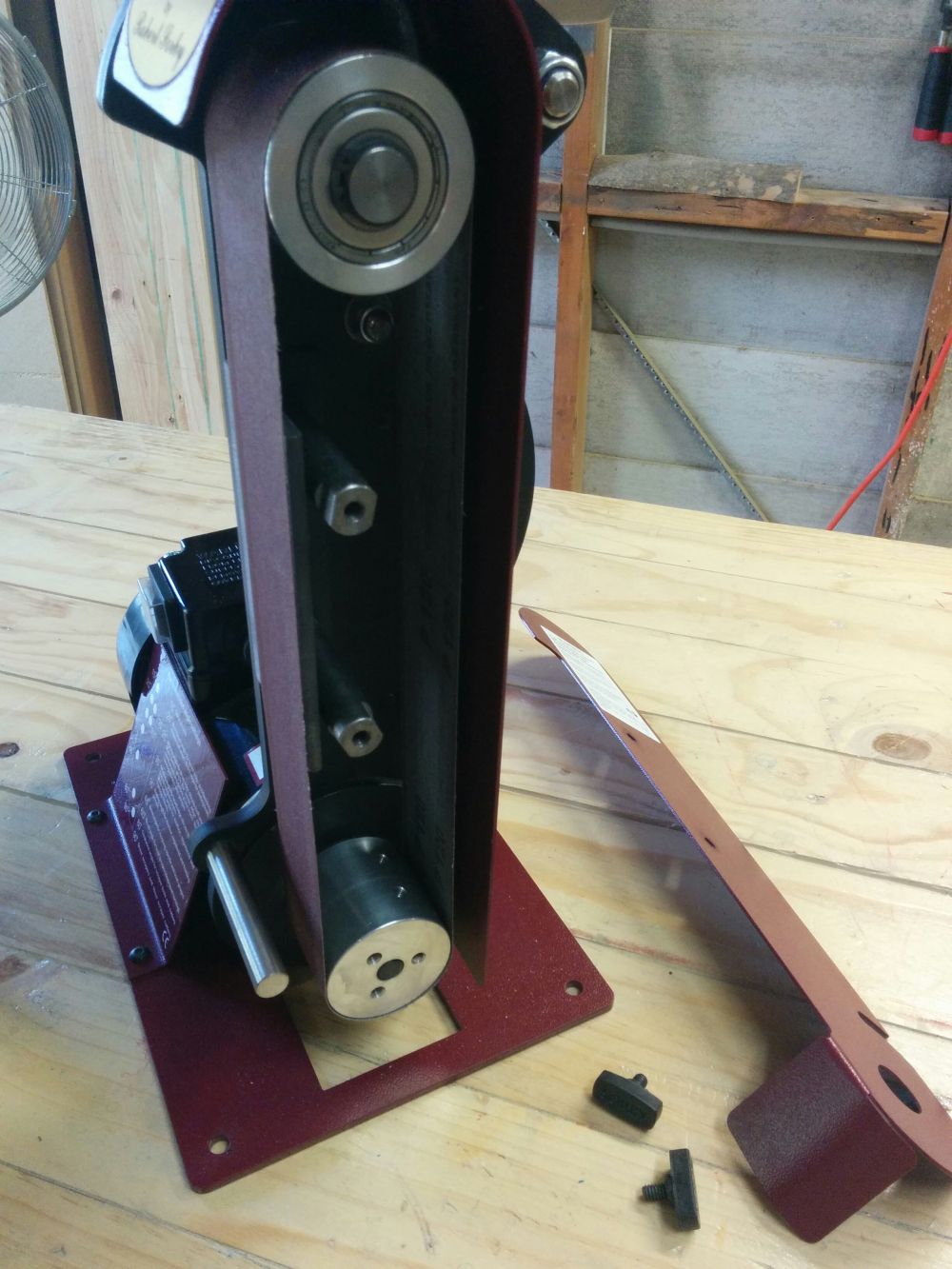
The side panel belt guard is removed. The tool platform is also removed here but does not need to be just to change a belt.
One of the best features of the Robert Sorby ProEdge, and what makes this sharpening system stand out from the crowd, has to be the brilliantly designed angle setter. This piece of solid metal with a bunch of holes in it makes sharpening tools at repeatable angles a breeze and it takes all the guesswork out of setting up your angle. The angle setter has all the most common angles in-built into it and the ProEdge also has a plaque mounted at the front of the unit, listing all the in-built angles and what they are commonly used for. This system is brilliant! It makes changing angles for sharpening different tools so easy and quick to do since there are no angle finding jigs to mess around with and no manual measuring of angles with a protractor.
And if you want to sharpen at an angle which doesn’t have a pre-defined hole, you can do that too by backing the angle location pin out so that it clears the location holes and positioning the tool platform at your desired angle and tightening the locking bolt.
Another great feature of the Robert Sorby ProEdge is the tilting belt assembly. This means that you can tilt the whole belt assembly backwards until you find a comfortable working position. This is especially useful when sharpening tools at shallow angles because you can just rest the tool on the tool platform and not have to be constantly fighting gravity to hold it up against the sanding belt. This is accomplished by loosening two screws next to the drive pulley at the bottom of the belt assembly and tilting the whole assembly backwards.
The ProEdge comes with a tool for loosening these two screws and it’s quite comfortable to use due to its large handle. Most manufacturers would just supply a standard hex key, so this is quite a nice inclusion.
I did however find a small issue with this tilting assembly and it’s to do with the positioning of the back swivel screw. It can sometimes be quite difficult to get to the back screw because the belt cover is either in the way or else it’s just too dark in there to actually see where the screw head is. This is a very minor issue, and I’m not really sure how they could have done it any differently, however it is a bit irritating if you’re changing angles often. I did however find that I could get away with leaving the back screw friction tight and only loosening and tightening the front screw to hold the belt assembly. So far this seems to work for me and I don’t have to fiddle with finding the back screw.
The drive pulley of the ProEdge has three tapped holes in it which are used for mounting accessories you can purchase separately such as the pigtail mandrel for mounting a buffing mop, or the honing wheel and arbour. I don’t own these accessories so I can’t really say how well they work, however something to keep in mind is that the ProEdge does not have variable speed, so if it spins too fast or too slow for your liking there’s not much you can do about that really.
The base plate of the ProEdge is fairly thick metal as well and it comes with four pre-drilled holes, one at each corner, for mounting to a fixed surface of some sort. The unit has a good weight to it so it won’t move around too much while you’re using it, however all that flat surface underneath the machine does allow it to slide around just a little bit, so mounting to a workbench or a bench hook is a good idea.
As a temporary solution I dropped two 8mm bolts in the front two holes and they act as a stop against the edge of my workbench, so the ProEdge can’t slide backwards.
The base plate also has a rectangular cut out right below the drive pulley, and this is for the swarf to be extracted if the machine is mounted.
The user manual included with the ProEdge is of good quality. It’s easy to read and full of coloured diagrams. It is on the shorter side at only twenty pages with about half of them being taken up by safety warnings and pictures of accessories you can purchase, however this unit is very easy to operate and understand so there is probably no need for more detailed instructions than what is supplied.
The motor on the Robert Sorby ProEdge is a 370 watt 2800 rpm single phase induction motor with a 440V capacitor mounted at the back. This translates to a 1/2hp motor with a belt speed of 1400ft or 440m per minute.
I have not been able to stall the motor, even when sharpening wide plane irons, and I think the speed is adequate because if it were too fast it would overheat the tool being sharpened and you’d risk losing the steel’s temper and your tool won’t hold an edge.
Sanding Belts
Robert Sorby provide a range of sanding belts for the ProEdge. The belts are 2″ wide and come in different grits from a rough 60 to a very fine 3000 grit which can achieve an edge of 2 microns.
- Aluminium Oxide belts ideal for sharpening woodworking chisels, carving tools, and plane irons. Available in 60, 120, and 240 grit.
- Zirconium belts designed for HSS tools, drills, and router bits. Available in 60, and 120 grit.
- Ceramic belts suitable for heavy material removal because they are very hard wearing. Available in 60, and 120 grit.
- Trizact belts enables sharpening to a razor edge of 2 microns. Available in 600, 1200, and 3000 grit.
- Diamond belts designed for sharpening tungsten carbide, ceramic, glass, natural stone, as well as many other resistant materials.
When I purchased my ProEdge I also purchased some trizact belts. These belts are made in the USA by 3M and are designed to shed grit evenly, constantly exposing fresh layers of sharp particles as wear occurs.
Verdict
I’ve now had the Robert Sorby ProEdge Sharpening System for close to four months and I’ve sharpened all my chisels, plane irons, scrapers, marking knives, and all my kitchen knives and my parent’s kitchen knives, and so far it’s worked flawlessly. The ProEdge is a very good system and is extremely well built from the outside and looks like it’s made to last. Most things have been well thought out, and this makes it the fastest sharpening system I’ve ever come across. Yes, a hollow grind whetstone sharpener like the Tormek for example, can probably get a sharper edge, but it will take forever to do that with a badly beaten up edge. Plus you’d need to flatten the stone occasionally and you’re dealing with water which can get messy and replacing the stone can be expensive, and so on. The Robert Sorby ProEdge creates a flat grind and does it fast with minimal fuss. And it’s cheaper than a Tormek. If I could afford it, I’d get both a ProEdge and a Tormek so that I can flatten chipped edges fast on the ProEdge and polish them out on the Tormek. However, since I could only justify the price of one machine I went for the ProEdge because of the speed advantage.
Pros
- Very well made
- Quick angle setting and repeatability
- Tilting belt assembly
- Quiet motor
- Easy to change grits by changing belts
- Large number of accessories available
- Base plate mounting holes
- Instructions mounted on the front of the unit
- Good range of belts available
- Can also be used as a sander for wood, for example fine tuning small mitre joints
- Price – cheaper than its major competitors like Tormek
Cons
- Price of around $500 (back in 2015 when purchased) – still quite expensive for what it is
- The side belt guard is a pain to constantly open and close on every belt change. Should at least be hinged.
- Slightly difficult to get to rear belt assembly swivel screw
- No variable speed
- The tool platform could be smoother
- The ‘Basic’ does not come with any form of jig to help with sharpening squarely
- The Trizact belts are not cheap – around $20 each from where I get them
- I don’t even want to know how much the diamond belt is…
I purchased my ProEdge from Timberbits here in Australia because it was one of the cheaper prices I could find, however you could also get one from Carroll’s Woodcraft Supplies or CarbaTec.
If you have any questions or comments regarding this review, or the ProEdge in general, please feel free to leave them in the comments section below.

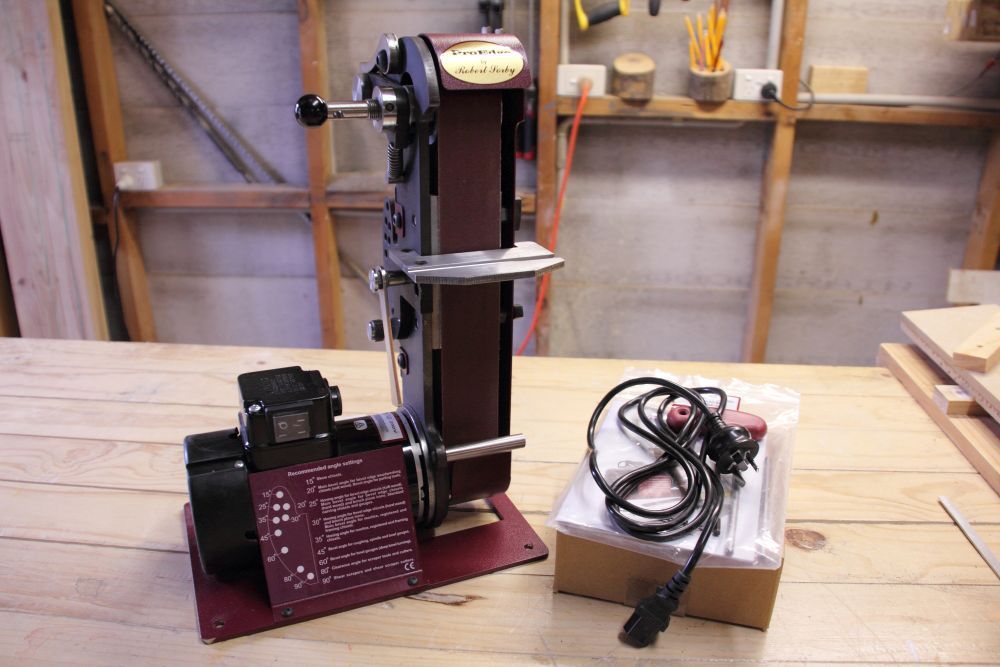
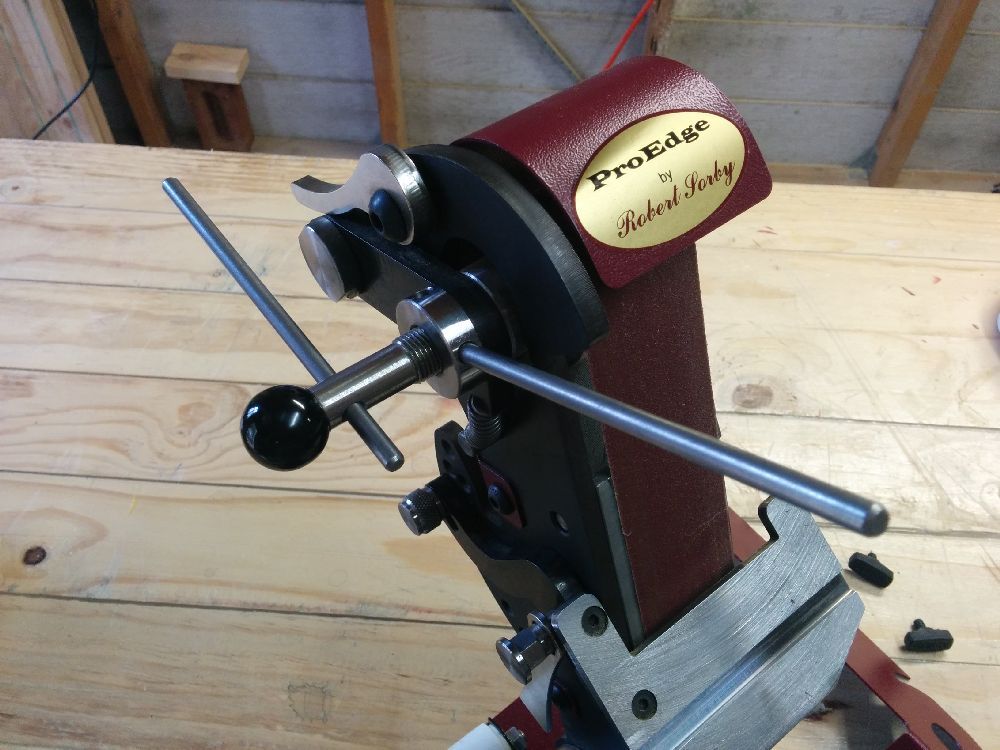
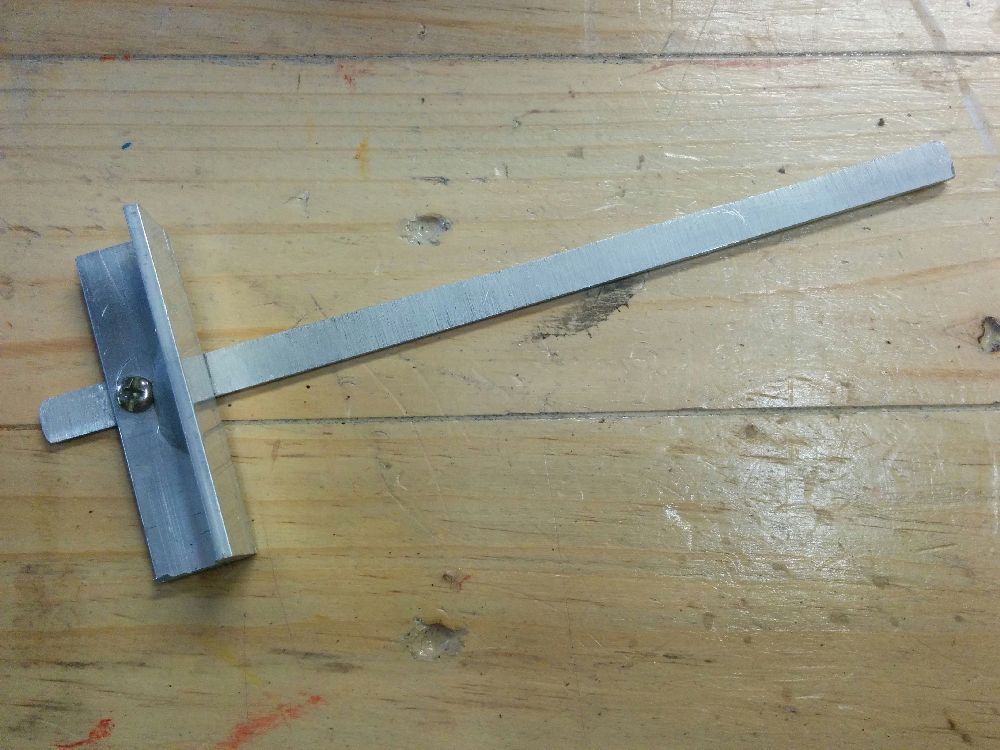
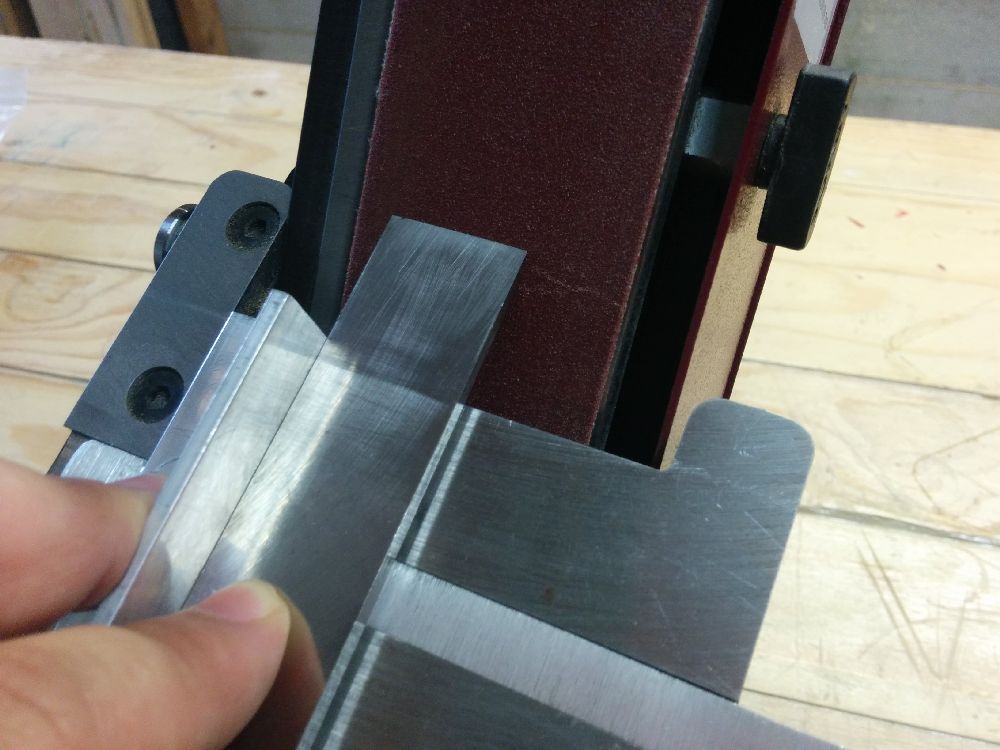
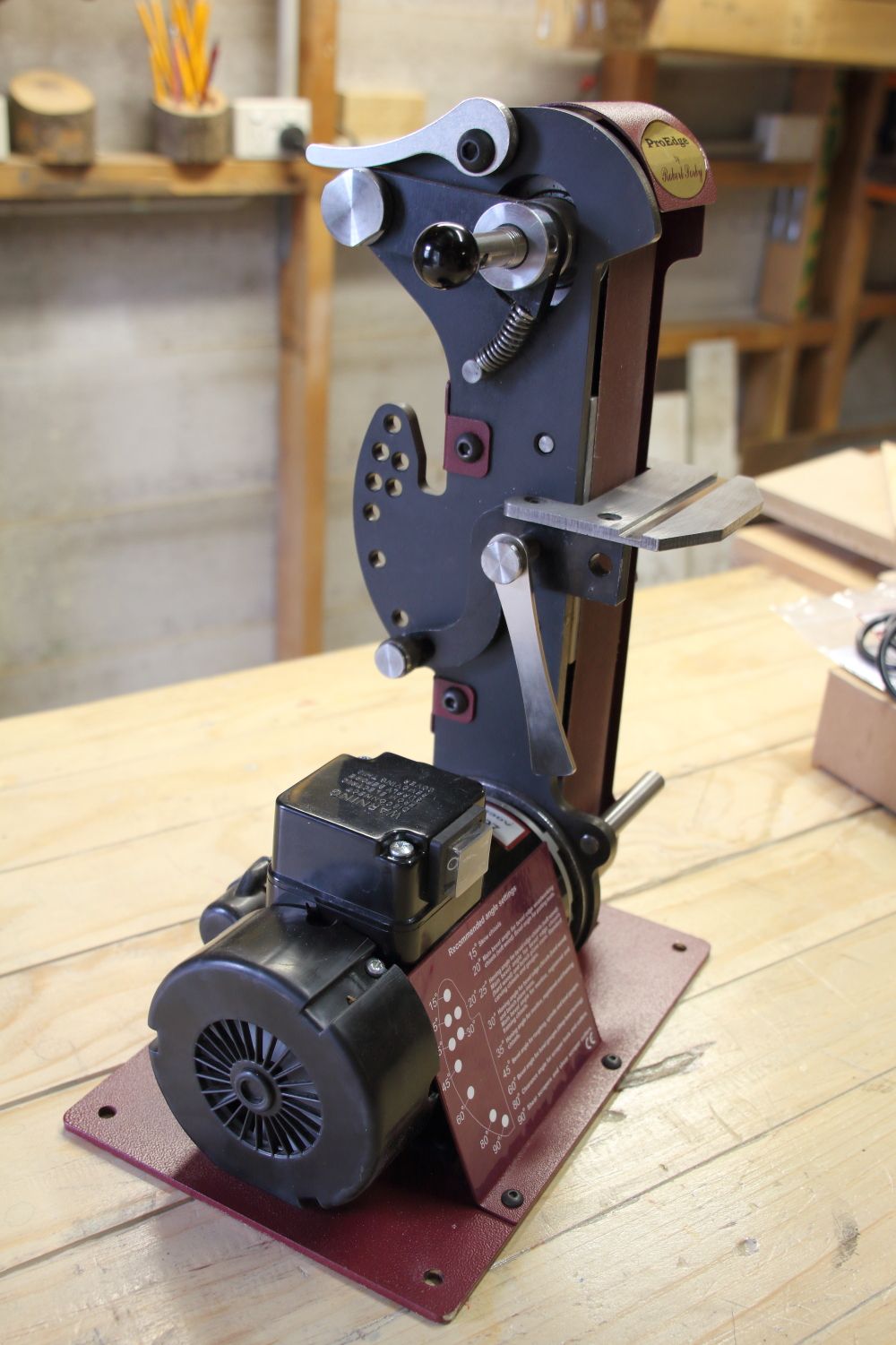
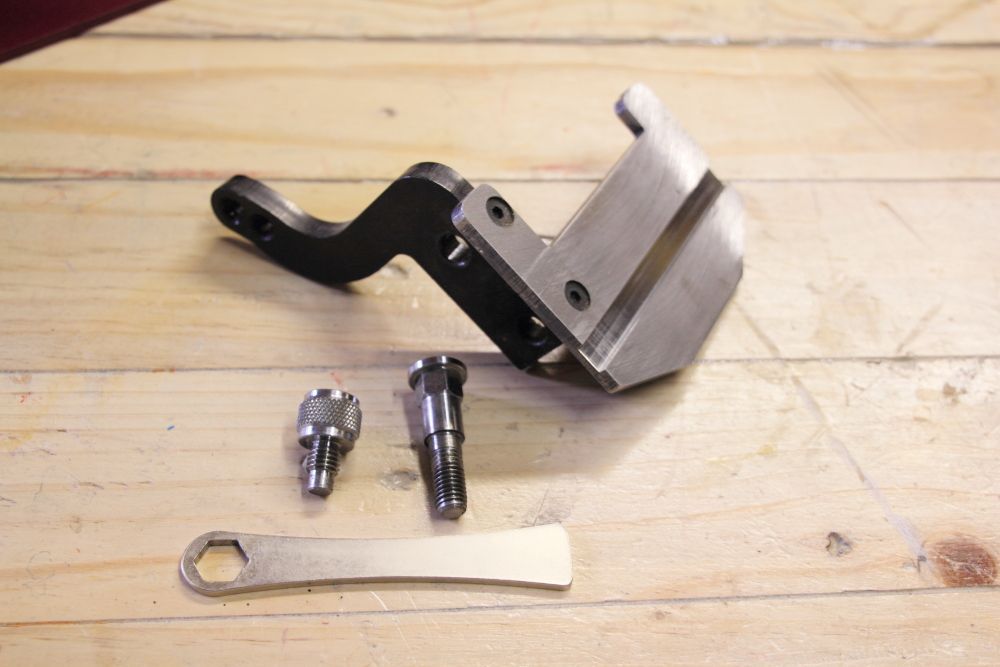
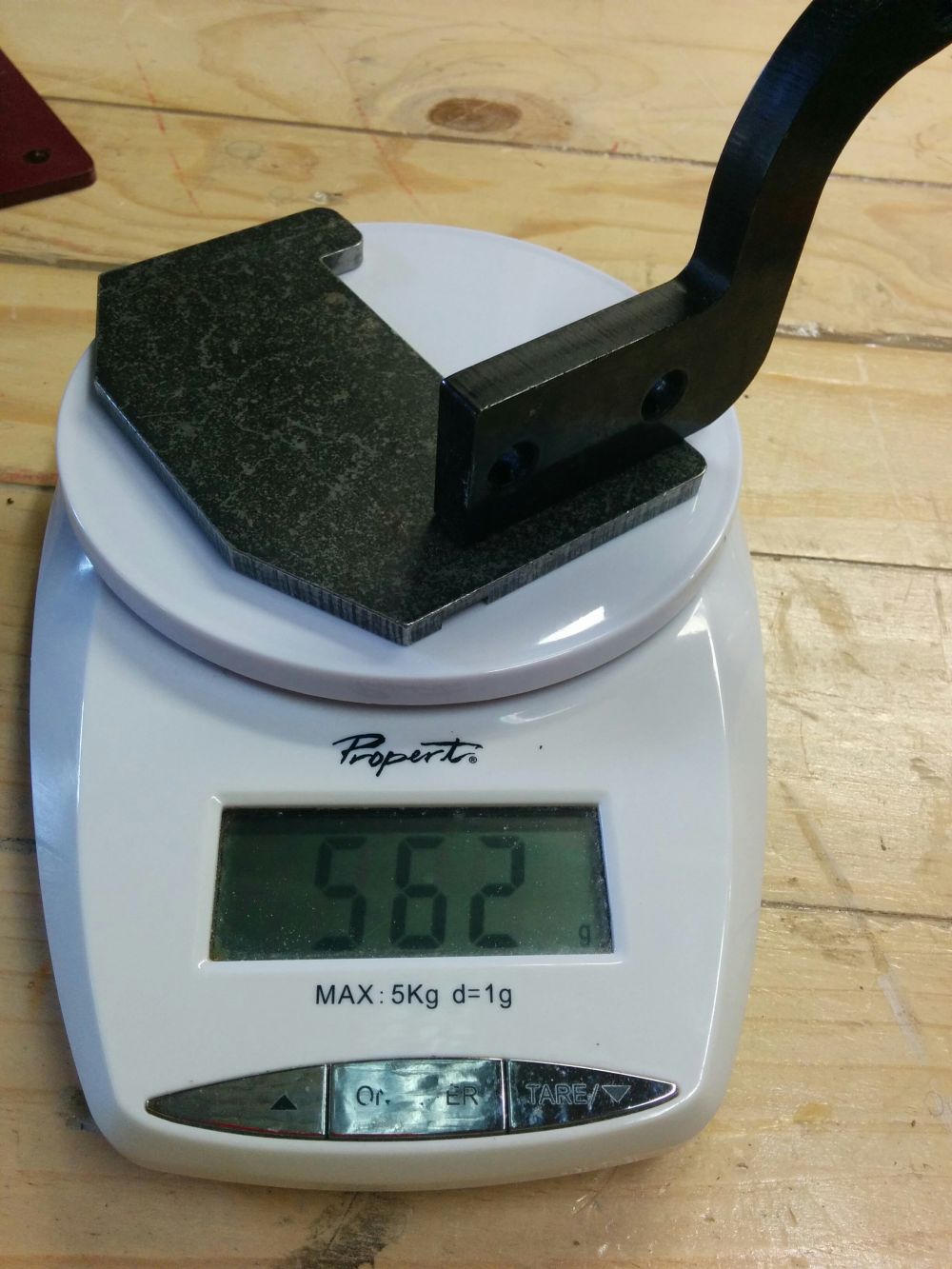
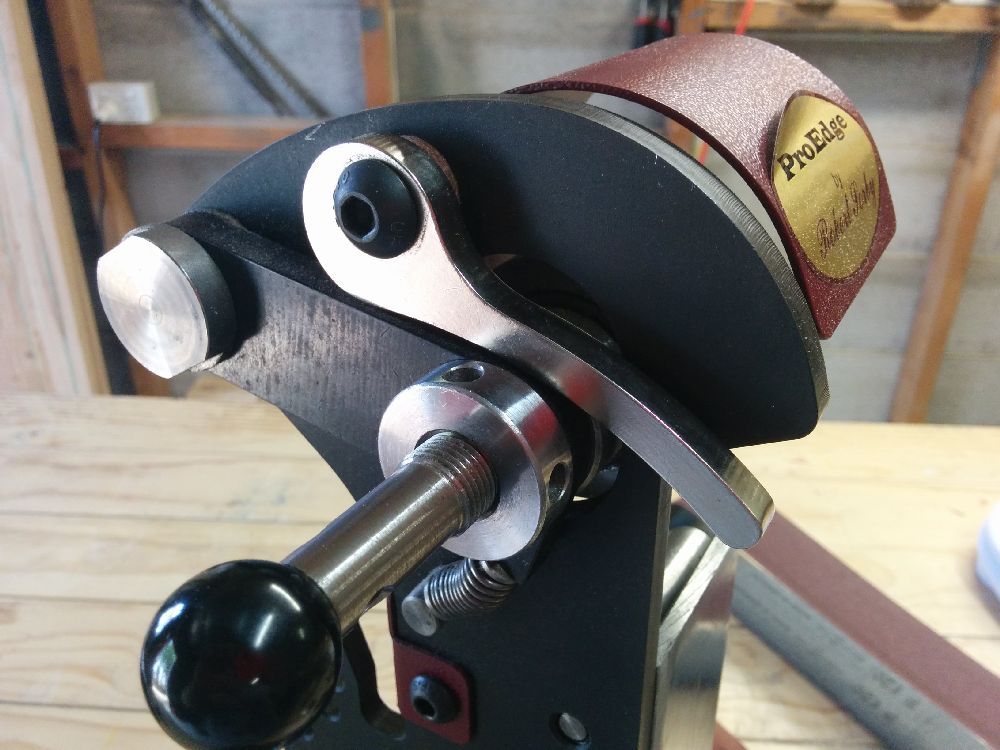
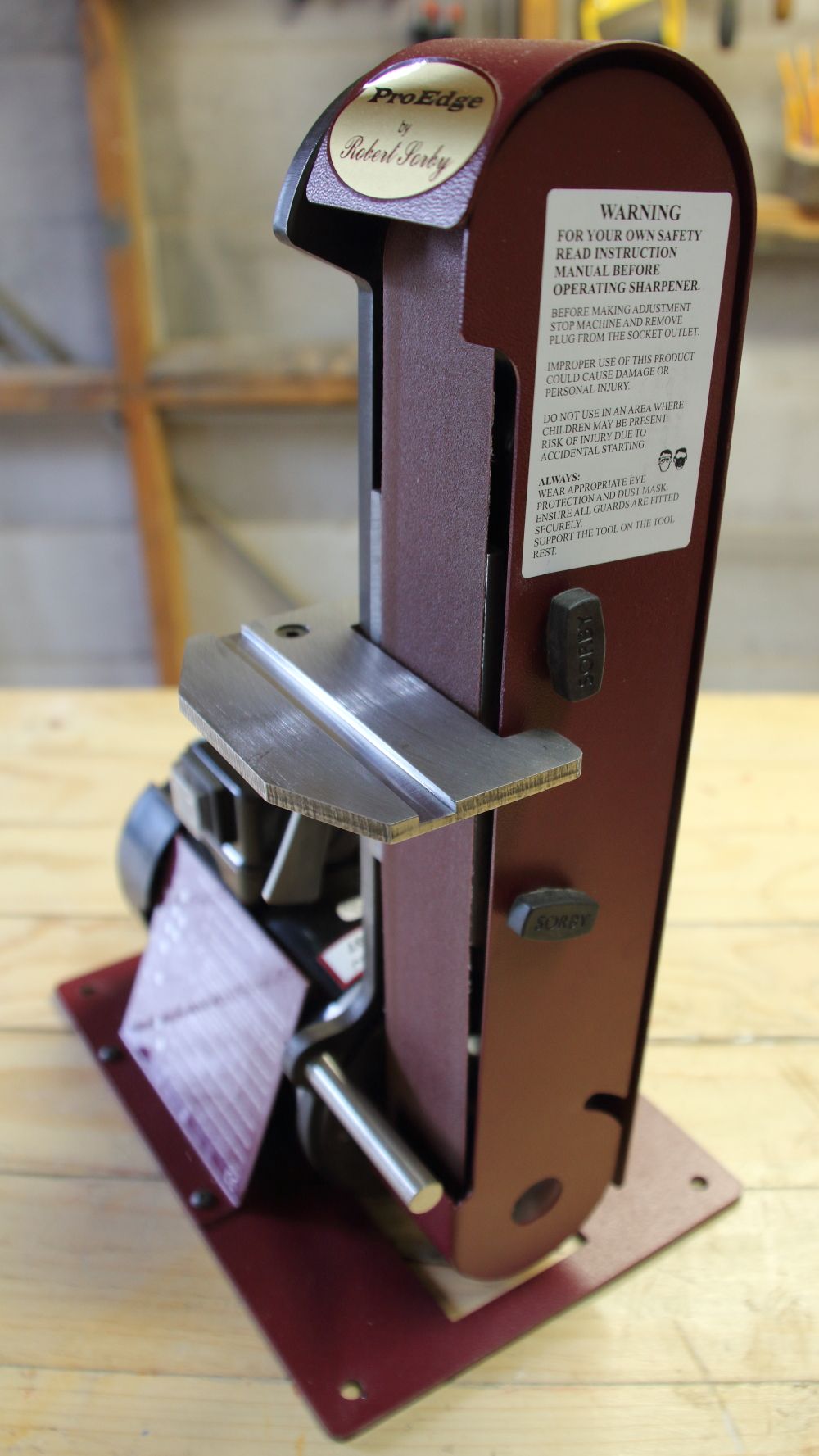
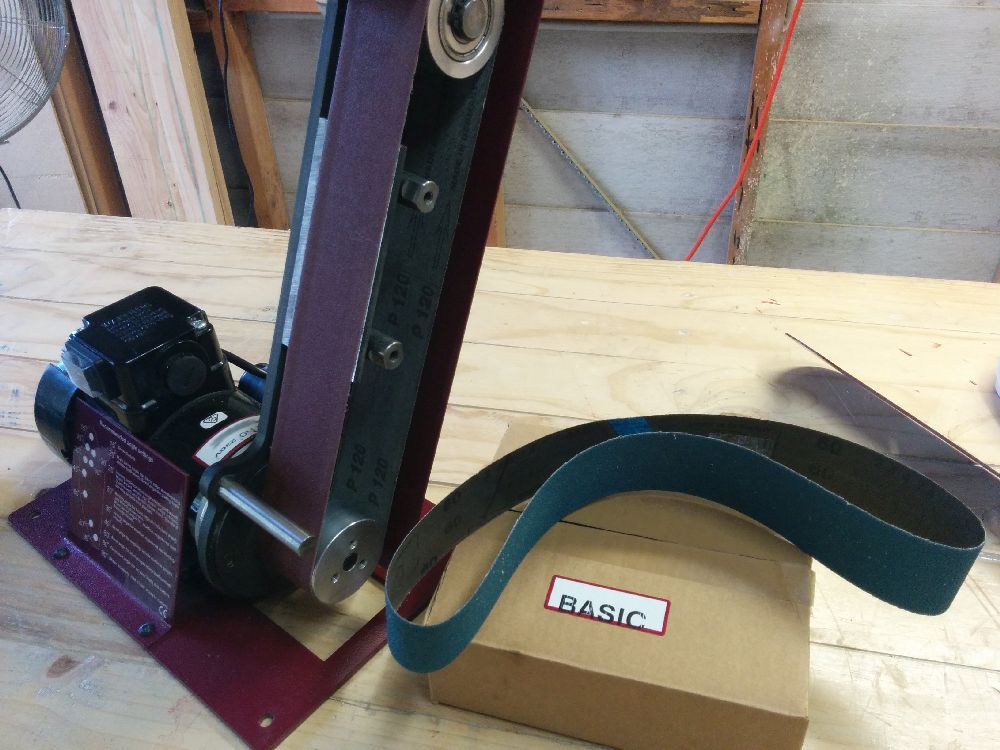
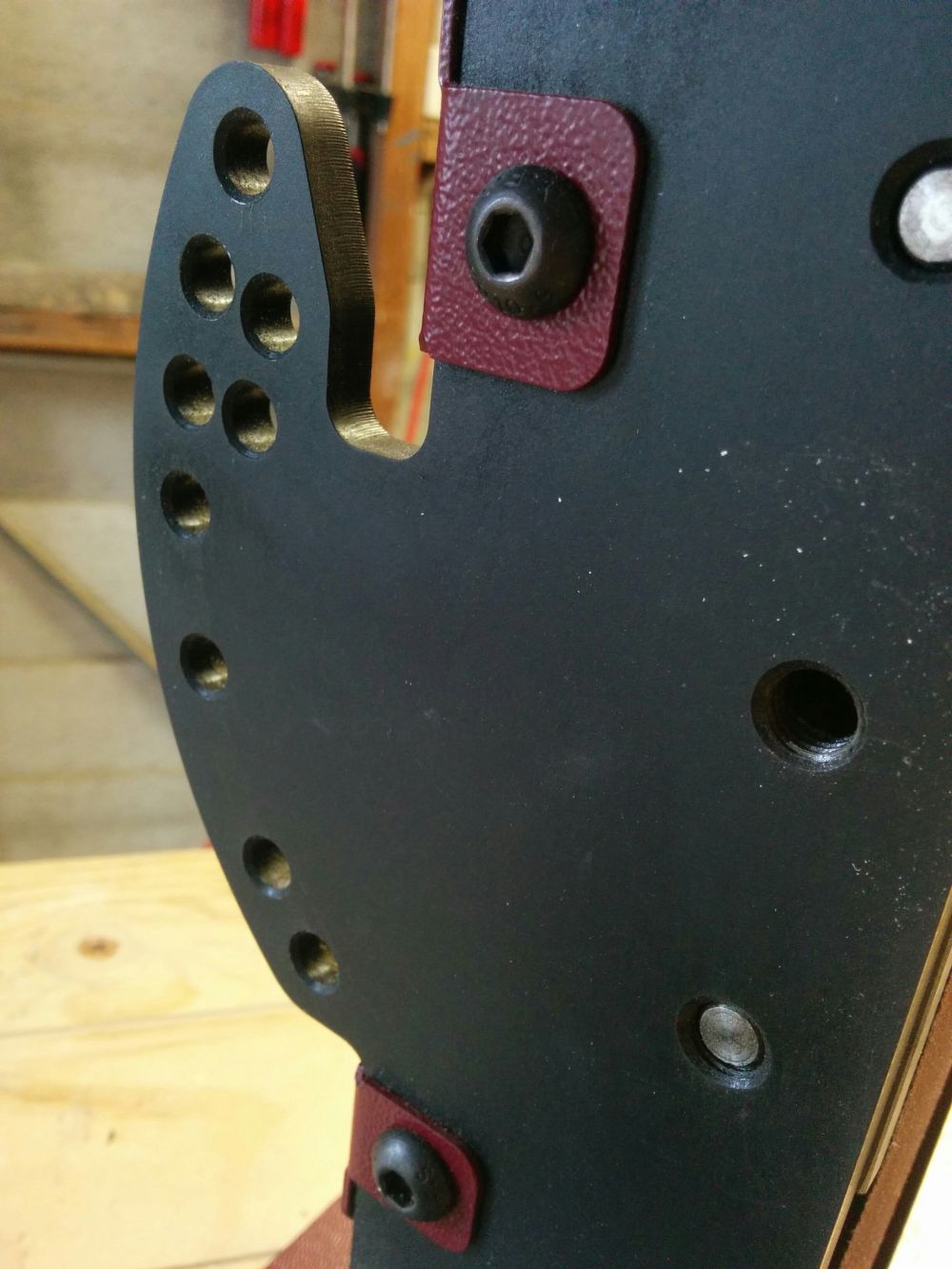
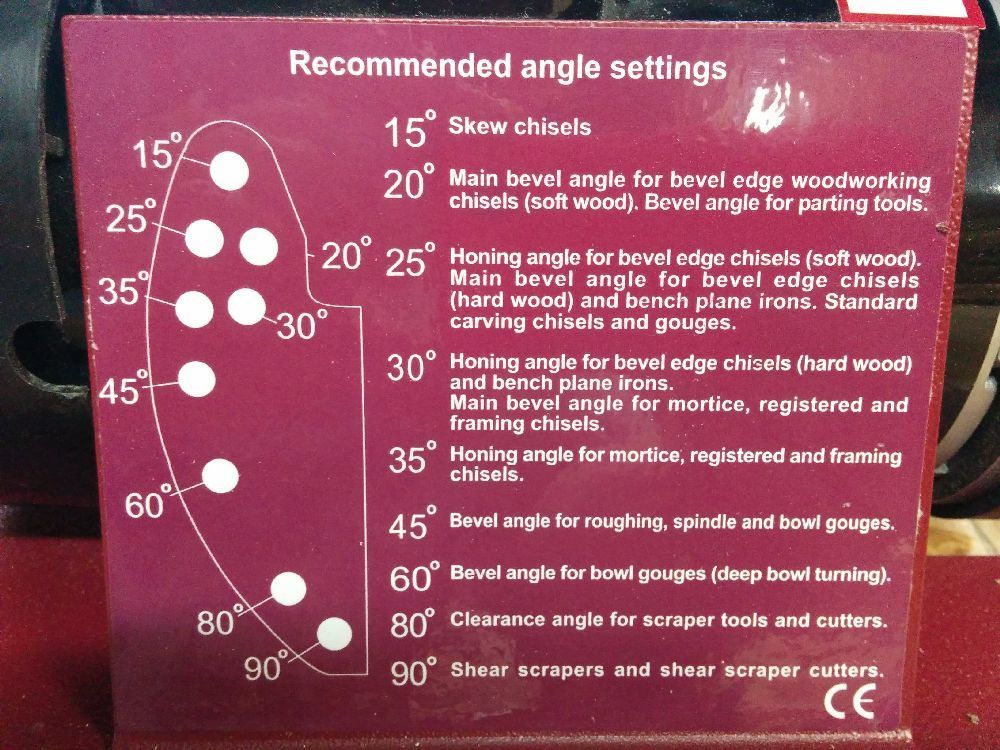
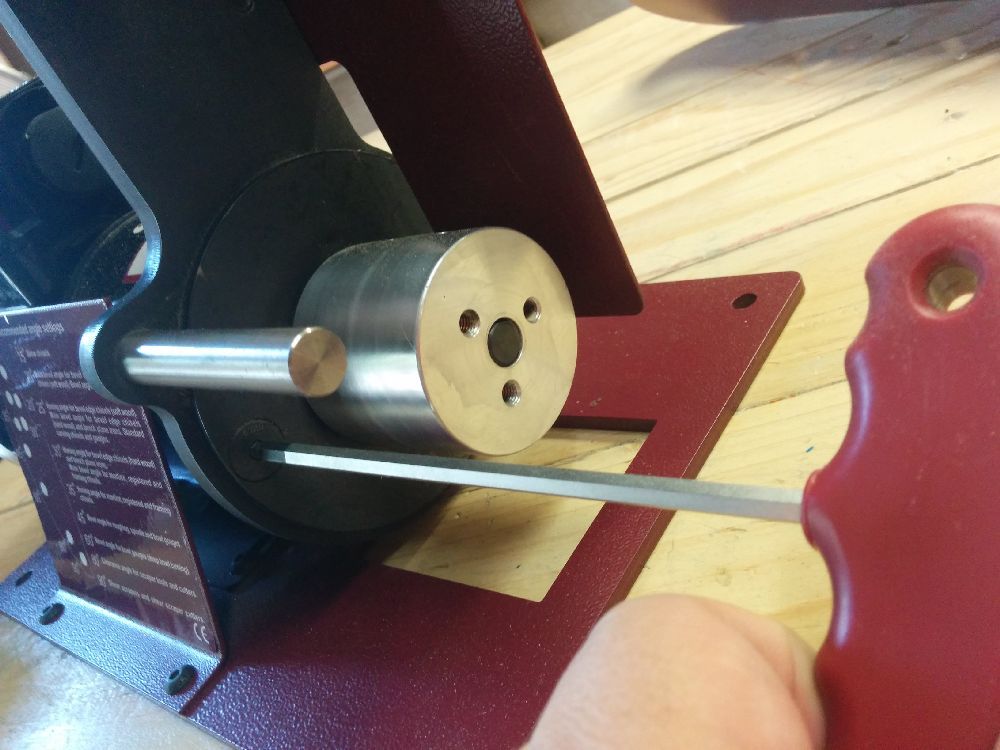
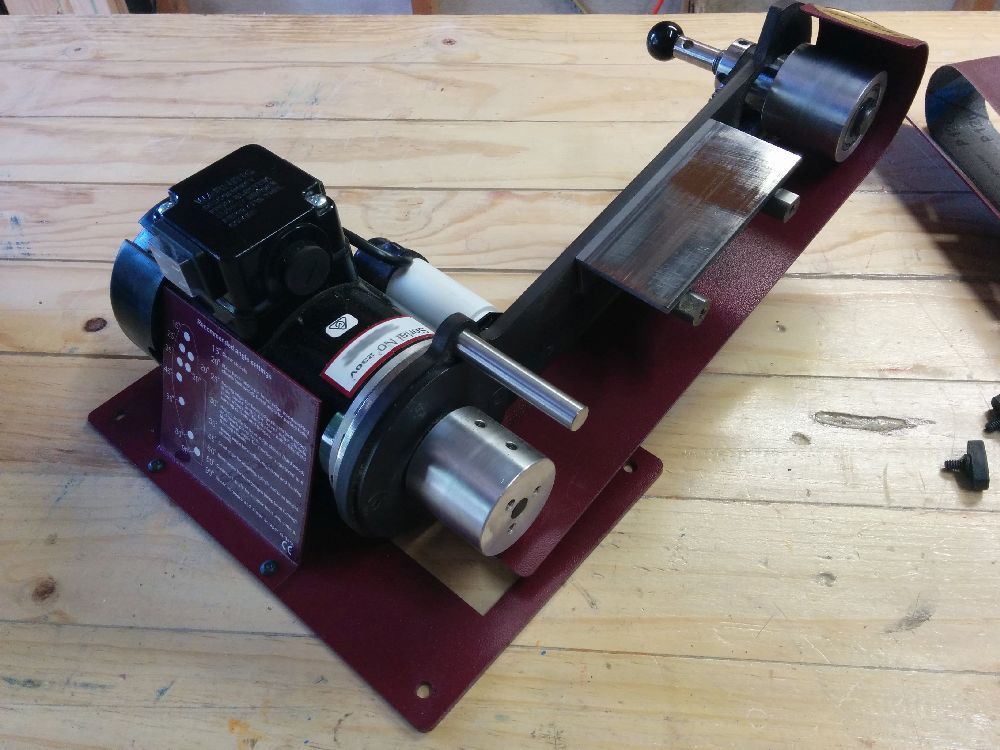
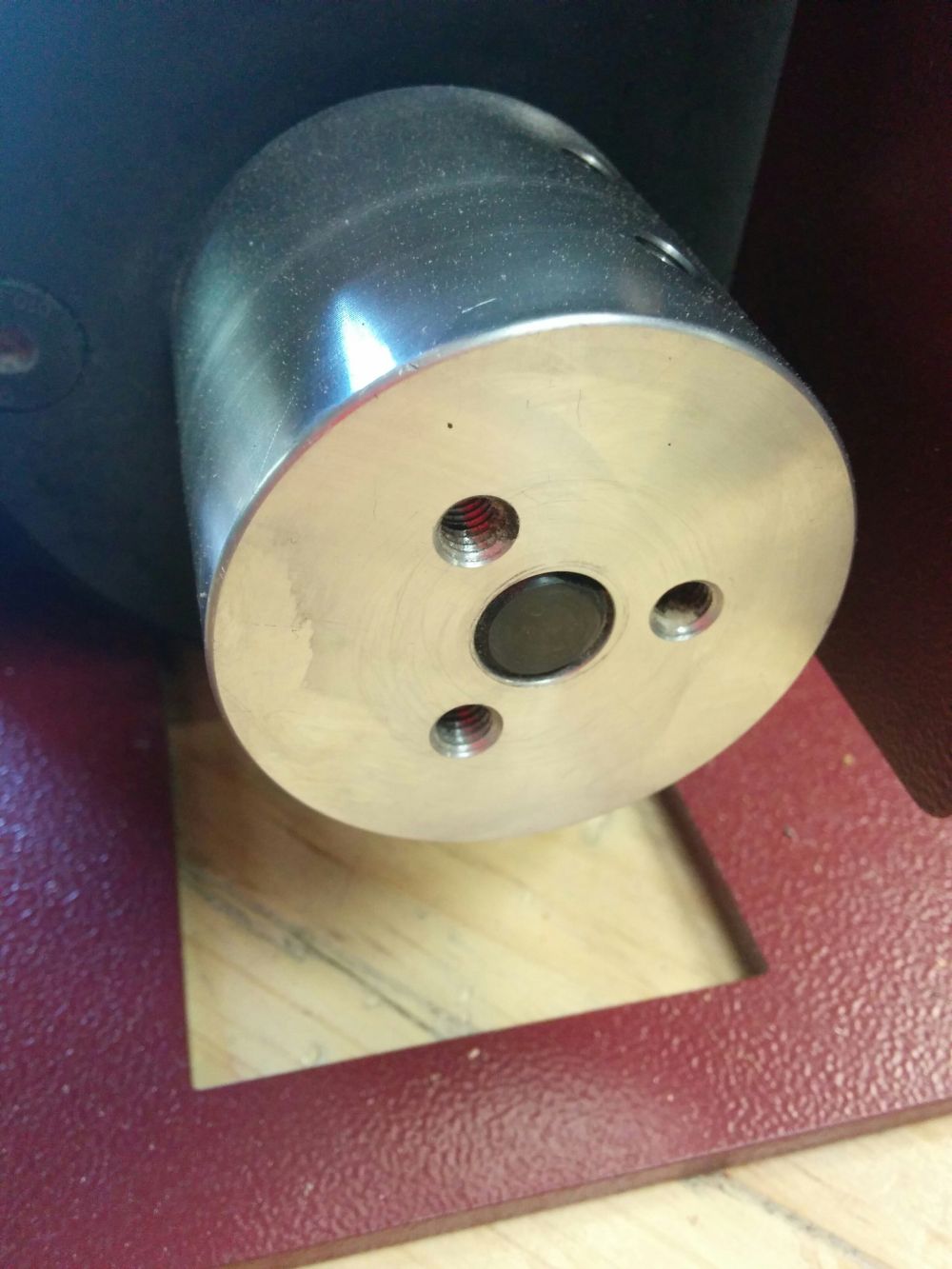
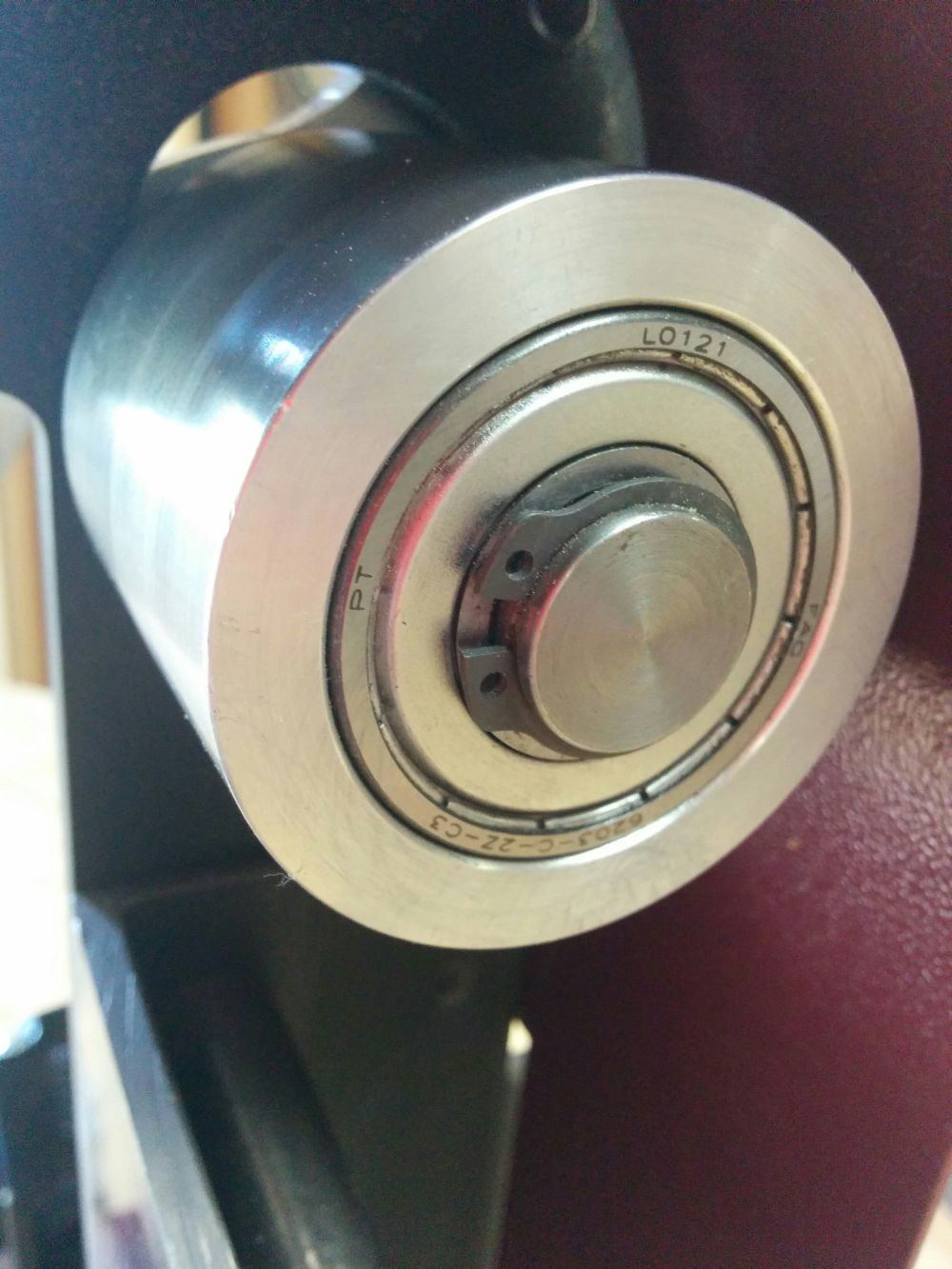
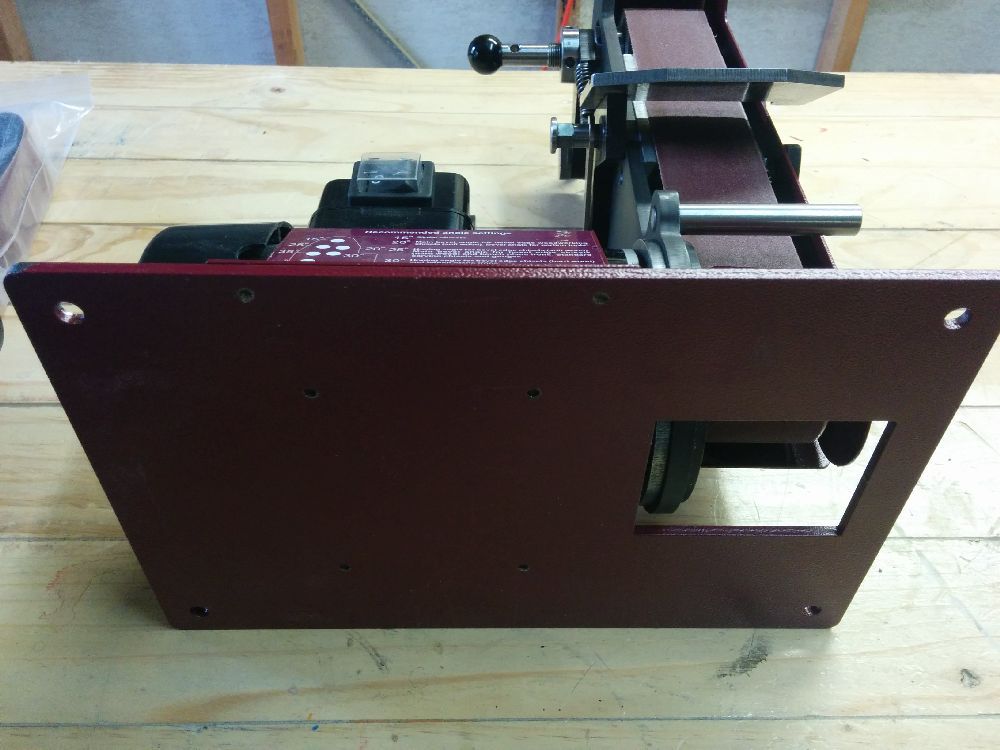
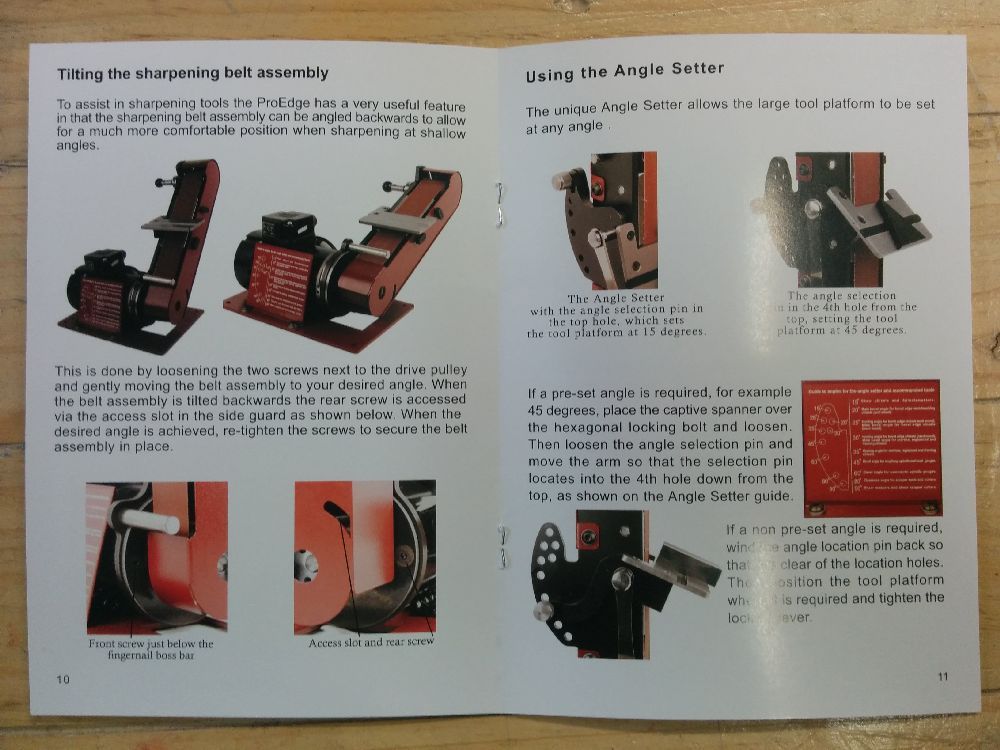
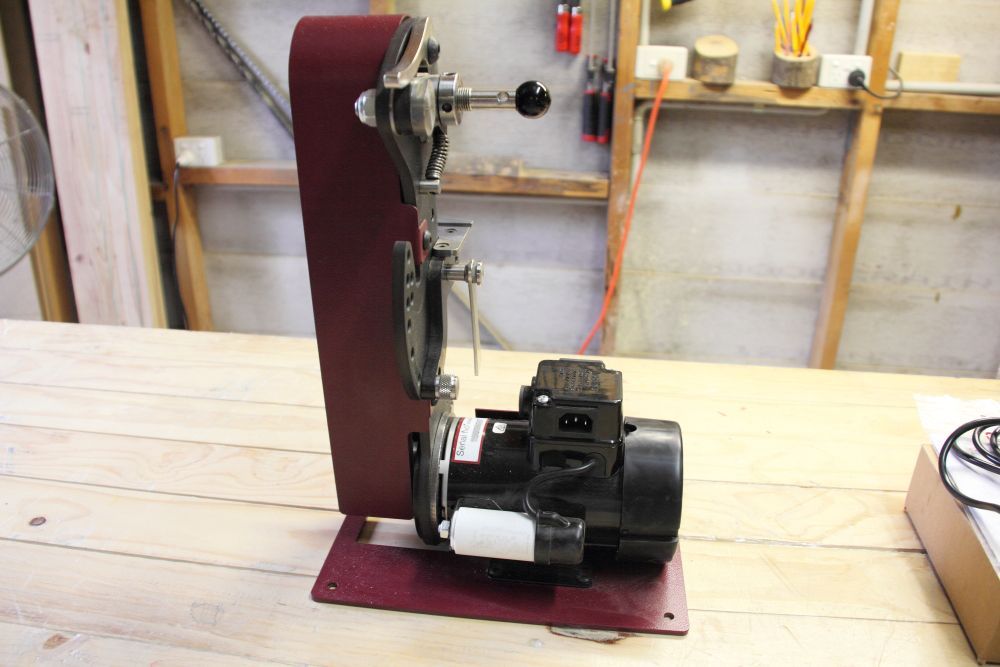
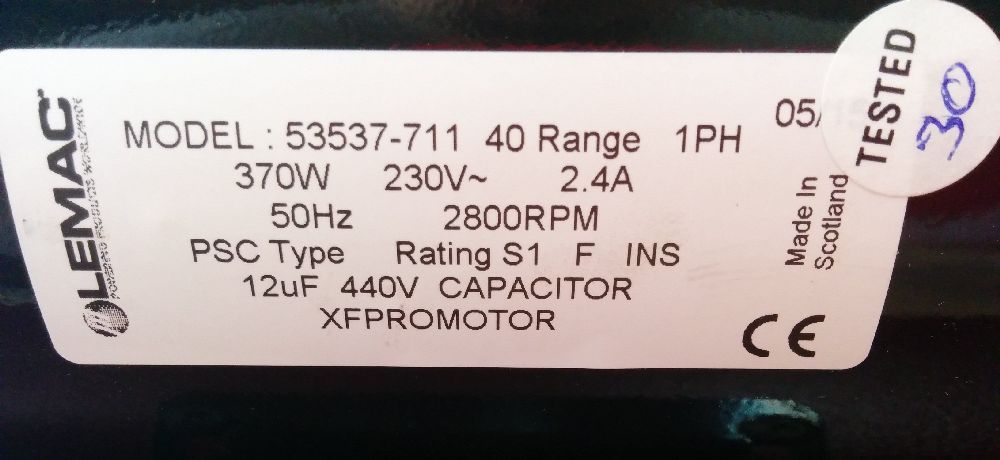
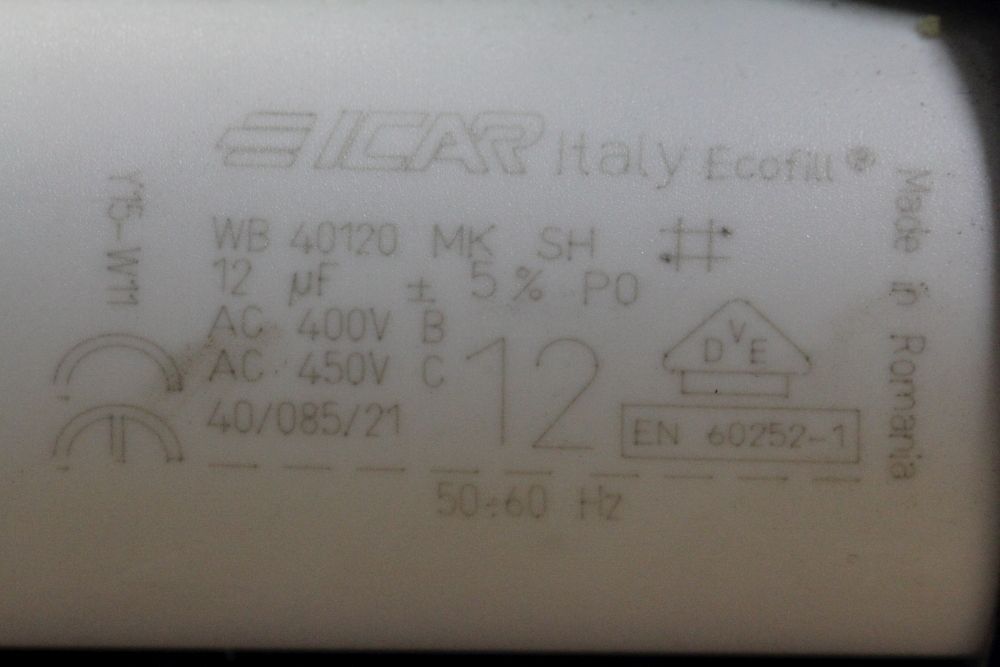
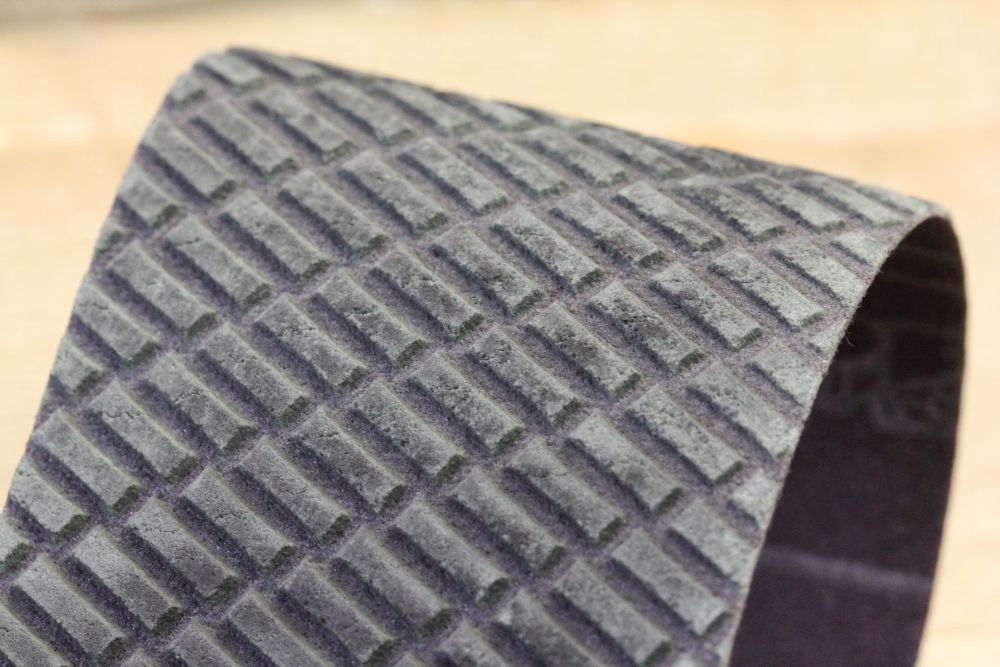
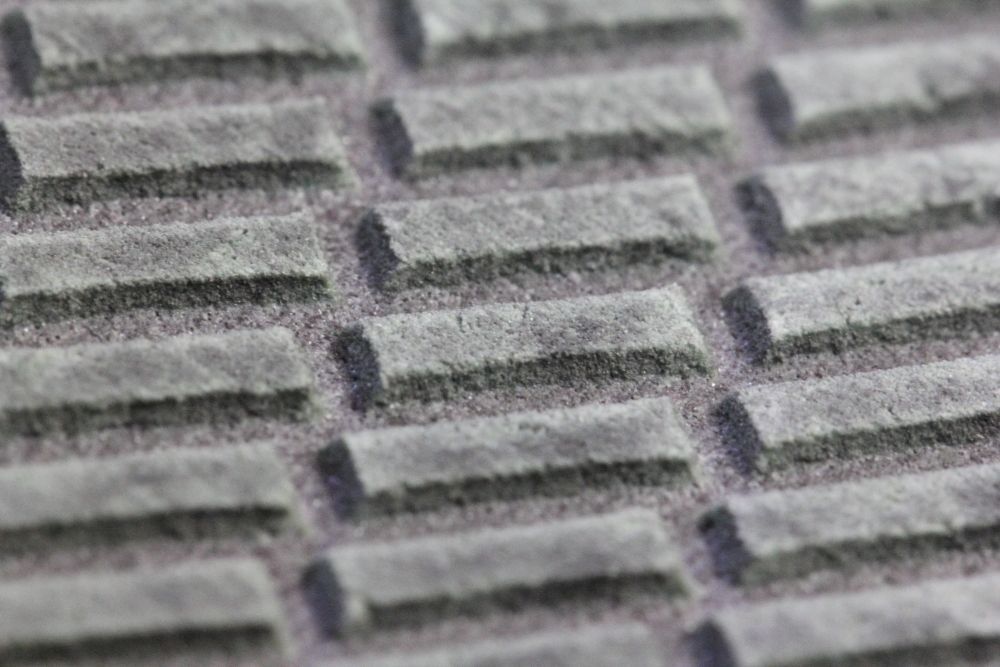
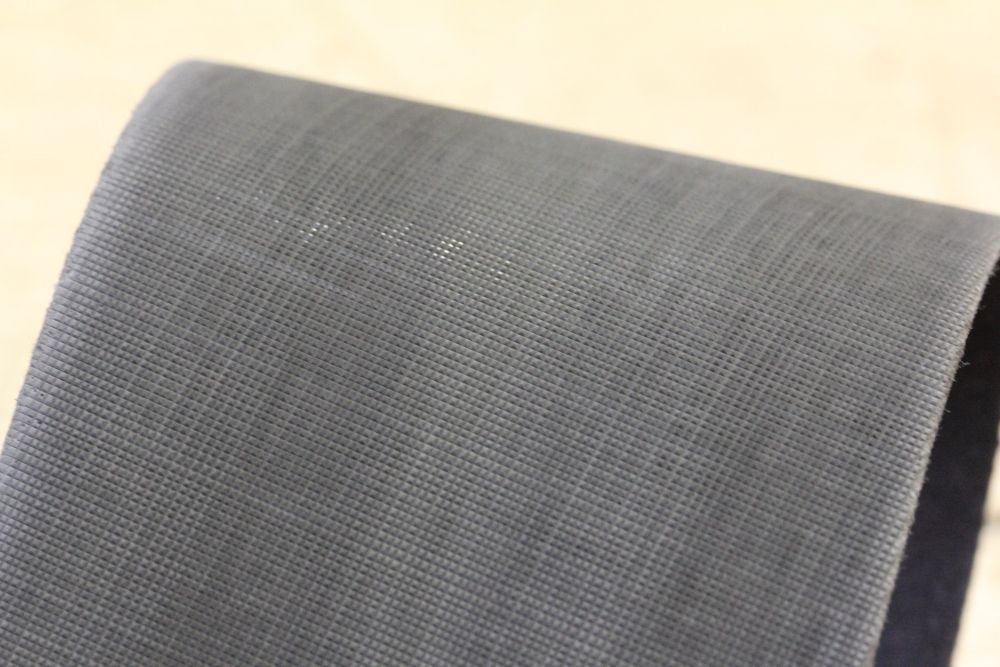
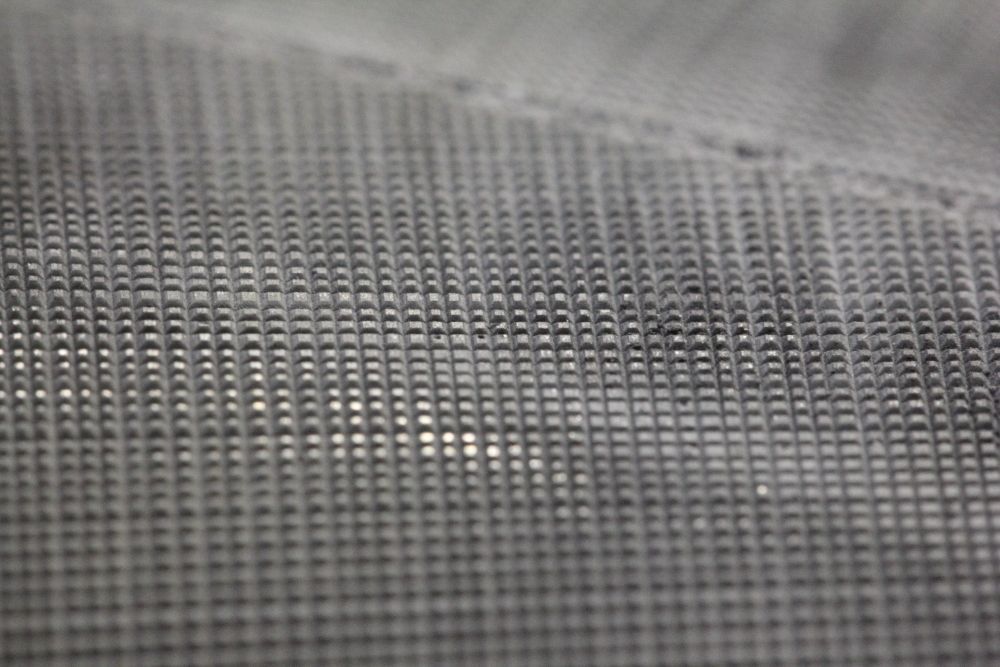
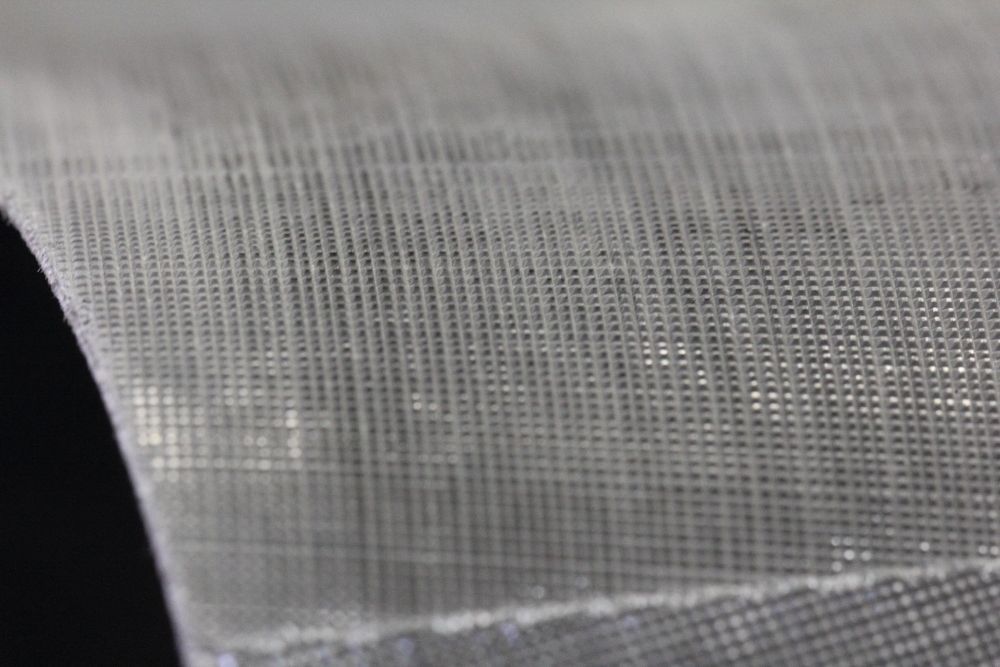
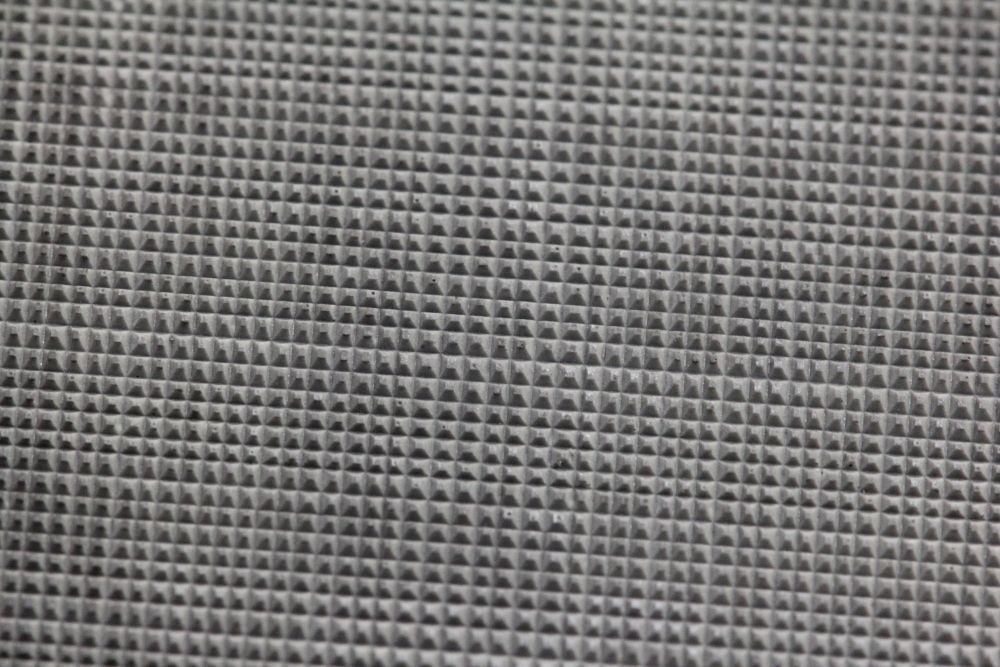
Is there anyway to slow the motor speed down.
I have no idea – I don’t see how it could be done as it’s directly driven.
Greetings from Malta. Thank you for such a thorough review of this machine. Just ordered one!
I’m glad you found the review useful! I’ve had this machine since 2015 and I’m still really happy with it.
If you are considering one of these also look at the Metabo BS175, with a few modifications its equivalent but much more affordable. its very popular on woodworking and knife making forums.
I have recently purchased the Proedge Deluxe . I have to say Im very happy with it . Its really easy to use and the bug thing for me is repeatability . I have sharpened and in many cases reground my turning tools. It is quick and easy.
Previously I have been sharpening my turning tools with an slow speed grinder with aluminum oxide wheels. I use Tru-Grind jig for spindle gouges which is not that good for repeatability. I also have a Scheppach wet stone grinder that I haven’t had much success on for my turning tools.
The review on this site was one of many that I looked at before a plunged deeply into my wallet. I’m really pleased with the system .Thanks for your review
Thanks Bernie, I’m glad you found the review helpful.
Very nice review! I truly appreciated all the detailed pictures supplied. I have been entertaining the idea of getting a pro edge for close to a year now………I do believe it’s the right machine for me. I’m a wood carver. I make my own tools. So a belt sander is something I’m used to, and have zero overheating issues due to experience. The thing the pro edge has that my other grinders do not, is the repeatability on angle setting. That is something that generally slows me down during set up or if I’m just free handing. I’ve been wanting to speed things up and I feel this is the answer. Thanks again.
It sounds like what you’ve done there should work pretty well and is definitely the cheaper option. I particularly like homemade custom solutions like what you did with the belt sander because you can design the solution to fit your specific needs, whereas a store-bought system like the ProEdge is trying to cater for everyone’s sharpening needs and that could sometimes over complicate the tool.
On the other hand, the ProEdge is good for someone who can’t be bothered setting up a custom jig and just wants to get sharpening as quickly as possible. It’s also a quality tool which makes it a joy to use.
I guess the decision whether to purchase a ready-made machine over making your own comes down to how much time and money you’re willing to spend to get what you’re after. I don’t think there’s any right or wrong answer really.
I noted with interest you comment that, if money were no object, you would “… get both a ProEdge and a Tormek so that I can flatten chipped edges fast on the ProEdge and polish them out on the Tormek”. That encourages me because I have effectively done something like that for less than the cost of either machine, and it is good to know I am on the right track. I first purchased a 10″ Sheppach Tiger 2500 wet stone grinder from Total Tools for AU$340 and a Tormek SVD-186 gouge jig (the Sheppach jig is fine for skew chisels). That works well for gouges and chisels that are already the shape I want, and just need to be sharpened. If I am turning and feel the tool is a little dull, I can sharpen it in about a minute. However, if I want to change the bevel angle or repair a chip, it takes forever, and wears the stone.
I then bought a Ryobi benchtop belt/disc sander from Bunnings for $128, and a selection of zirconium and aluminium oxide belts from the Sandpaper Man (an online only retailer), from memory, for around $5-$7 each. I also bought the Tormek BGM-100 bench grinder mounting kit, which includes the Tormek universal toolrest bar and all the fittings you need to use Tormek jigs on an ordinary bench grinder.
I made a custom trolley at Mens Shed so the belt sander is on a 45 degree angle, rotating away from me, and spent some time working out the geometry so the Tormek SVD-186 jig gives me exactly the same fingernail bevel angle on the belt sander as it does on the Scheppach wet stone grinder when using the Tormek TTS-100 Turning Tool Setter.
So now I have a choice:
1. I can do the whole job on the belt sander, changing the belts to finer grits as I go, or
2. I can do the whole job on the wet stone grinder, or
3. shape the tool on the belt sander and then sharpen and hone it on the wet stone grinder, which is what I tend to do.
I recently chipped a gouge by accidentally touching the revolving chuck with its tip, and using the combination, of disc/belt sander and wet stone grinder, I had a brand new fingernail bevel on it, which was exactly the same as the original one, in less than 5 minutes.
I would like to hear from you if you have time.
James